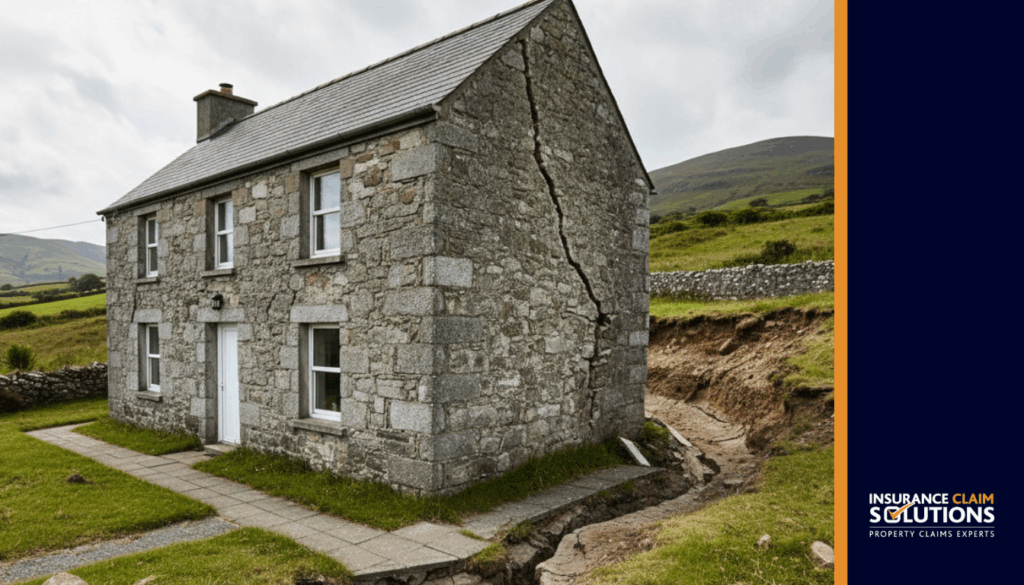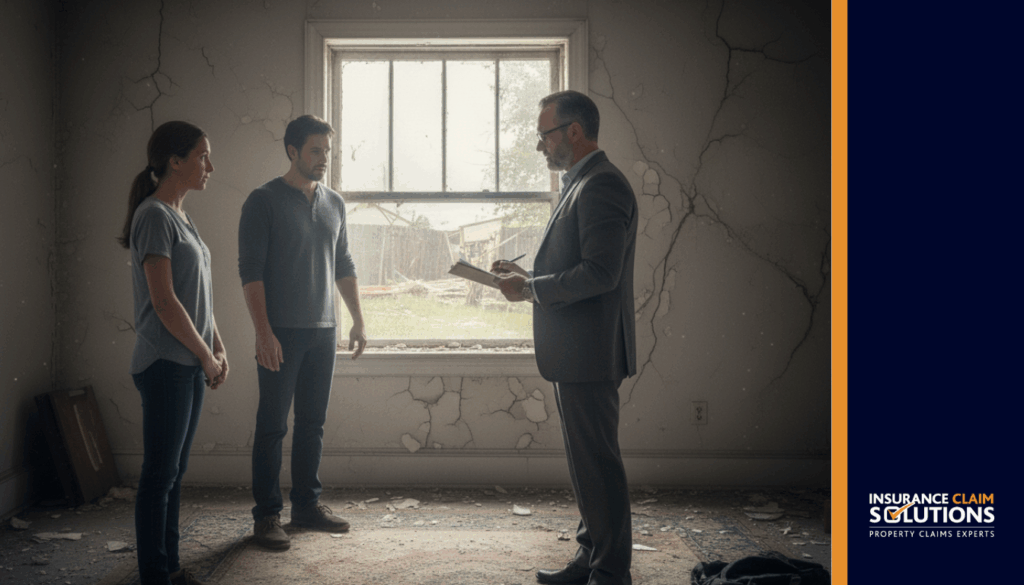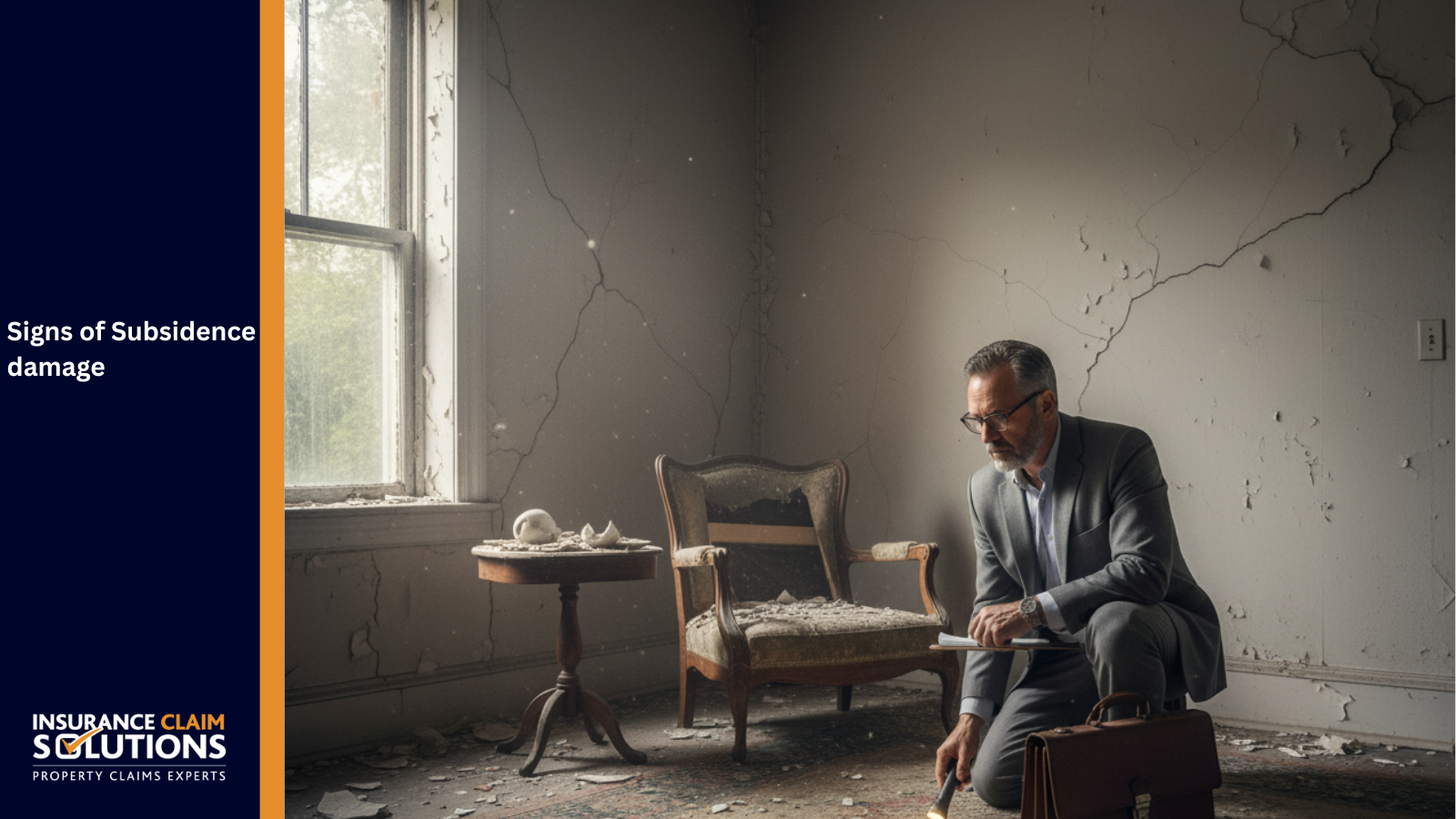If you’ve noticed cracks appearing in your walls or your doors suddenly sticking, you might be wondering if your home has subsidence. It’s a worry that keeps many Irish homeowners up at night, and for good reason. Subsidence can cause serious structural damage to your property, but catching it early makes all the difference. This guide will help you understand what subsidence actually is, how to spot the warning signs, and what steps you should take if you suspect your home is affected.
What Is Subsidence Damage and Why Does It Happen?

Subsidence happens when the ground beneath your property shifts or sinks, causing your home’s foundation to move downwards. Think of it like the ground literally giving way beneath your feet, except it’s happening slowly under your house.
Several things can trigger subsidence in Irish homes, including common causes of subsidence like soil erosion and downward movement. Clay soil is one of the main culprits. During dry spells, clay shrinks as it loses moisture, and when the rain returns, it swells back up again. This constant expansion and contraction can destabilise your foundation over time. Leaking drains are another common cause of subsidence, washing away the soil that’s supposed to be supporting your home. Trees planted too close to your property can also be a problem, as their roots extract moisture from the ground, especially during dry periods.
Understanding what causes subsidence in your area is the first step towards protecting your property. Counties like Dublin, Cork, and Meath see higher rates of subsidence claims because of their clay-rich soil composition.
How to Recognise Subsidence in Your Home
Not every crack in your wall means subsidence, but certain patterns of cracks in walls should definitely raise concern. Here’s what to look out for, including hairline cracks that may indicate subsidence.
The Tell-Tale Cracks
Subsidence cracks look different from ordinary settling cracks. They’re usually wider than 3mm (about the thickness of a €1 coin), and they tend to run diagonally rather than straight up and down. You’ll often see them following the line of doors and windows, wider at the top than at the bottom. These cracks can appear both inside and outside your home, and if they’re growing, that’s a red flag.
If you’re buying a property and notice significant cracks, it’s worth getting a surveyor’s opinion before you commit. The design and construction of buildings in Ireland is regulated under the Building Control Acts 1990 to 2014 (available at gov.ie), which set standards for structural safety, but older properties may not meet current standards.
Other Warning Signs
Sticking doors and windows are classic early indicators of subsidence. If doors that used to close perfectly now jam or drag, or windows become difficult to open, it could be because ground movement is affecting your home’s structural integrity. You might also notice uneven floors or a slight lean in your building, though these are usually signs of more advanced problems.
The key is to act quickly when you spot these signs. As one Irish legal expert notes, when potential signs of subsidence appear in a building, the owner should immediately have the matter professionally investigated and, if warranted, make a claim without undue delay.
Where Subsidence Risk Is Highest in Ireland

Your risk of subsidence depends largely on where you live and what’s under your property. Clay soils, which are particularly susceptible to volume changes with varying moisture levels, are widespread across Ireland. Dublin, Cork, and Meath experience the highest frequency of subsidence claims because of their clay-rich soil.
Climate patterns are increasingly playing a role too. Prolonged dry or hot weather causes soil to decrease in volume, making clay soil particularly vulnerable. With climate change bringing more extreme weather patterns to Ireland, subsidence claims appear likely to increase in the future.
Coastal areas face additional risks from rising sea levels and erosion that can weaken the ground beneath buildings. If you’re in a former mining area, historical underground activities can also cause ground instability.
Understanding Your Insurance Coverage

Most standard home insurance policies in Ireland include subsidence coverage, but there’s more to it than that, especially if cracks in walls develop. Some insurers exclude subsidence altogether in high-risk areas, whilst others require an additional premium. Even when it’s included, your claim might be denied if the subsidence is linked to pre-existing issues, poor maintenance, or wasn’t reported promptly.
Under consumer protection regulations overseen by the Central Bank of Ireland (details available at, you can find information on how insurance cover subsidence is handled). centralbank.ie), insurers must treat claims fairly and act in customers’ best interests. If you’re a consumer facing a dispute with your insurer about a subsidence claim, you have rights under the Consumer Protection Code and the Consumer Protection Act 2007.
Making a Subsidence Claim
If you suspect subsidence, time matters. Insurance policies typically require you to notify claims within a specific timeframe, and delays can give insurers grounds to avoid liability. There’s no point having subsidence insurance if you don’t use it when necessary.
When you make your claim, gather everything relevant: photographs of cracks and damage, any reports from surveyors or engineers, and notes about when you first noticed problems. Contact your insurer straightaway with a detailed account of the issue, including potential causes and any steps you’ve already taken.
Your insurer will usually appoint a loss adjuster to assess the damage caused by subsidence and determine next steps. They’ll investigate the cause, evaluate the extent of repairs needed, and may request additional expert reports. Keep detailed records of all communication and any expenses you incur along the way.
Proving a subsidence claim can be a slow and complex process. Your insurer will typically want to appoint their own engineer to investigate, and they may challenge whether subsidence has actually occurred. This is why many Irish homeowners choose to work with a public loss assessor who can represent their interests throughout the claims process.
How to Prevent Subsidence

Whilst you can’t control the weather or your soil type, there are practical steps you can take to reduce your risk.
Maintaining proper drainage around your property is crucial. Regularly inspect and repair any leaks from drains or water pipes to prevent them washing away the soil supporting your foundation. Be thoughtful about where you plant trees. As a general rule, don’t plant trees closer to your property than their maximum potential height. Large trees extracting moisture from clay soil can contribute to subsidence during dry spells.
Interestingly, cutting down or severely pruning large trees near your property can also cause problems. The soil may swell up with the extra moisture that’s no longer being drawn away by the tree, potentially causing foundation heave, which is the opposite problem but equally damaging.
If you have clay soil, consider installing a root barrier to prevent tree roots from growing near your foundation. Regular property maintenance and inspections can help you catch potential issues like hairline cracks before they become serious structural problems due to subsidence.
When to Call in the Experts
If you’ve spotted warning signs of subsidence, professional assessment is essential. A qualified surveyor can conduct a thorough inspection, looking for cracks, uneven floors, and other indicators. They’ll assess the ground beneath your home to identify what’s causing the problem, whether it’s clay soil movement, drain leaks, or something else entirely.
Based on their findings, the surveyor will provide a detailed report outlining the extent of the subsidence and recommending appropriate solutions. This report becomes crucial evidence if you need to make an insurance claim.
For significant structural damage, you’ll also need a structural engineer. They can evaluate your property’s structural integrity, assess the damage caused, and design appropriate repair solutions. Common repair methods include underpinning (strengthening the foundation by extending it to a more stable soil layer) or resin injection (stabilising the soil to prevent further movement).
Getting Professional Help with Your Claim

Choosing the right professionals makes a huge difference to how your subsidence issue is resolved. Look for surveyors and engineers with specific experience in subsidence assessment and repair, proper qualifications, and relevant accreditations.
When it comes to contractors carrying out the actual repair work, verify they have the necessary insurance and experience with subsidence repairs specifically. Get multiple quotes and compare not just price but also the scope of work and materials proposed to fix subsidence effectively.
At Insurance Claim Solutions, we specialise in helping Irish homeowners and businesses dealing with subsidence claims. Based in Dublin and working nationwide, we take over the entire claims process from start to finish. That means assessing hidden damage that you might not even know about, interpreting your policy coverage, negotiating with insurers on your behalf, and arranging appropriate repair solutions.
Our mission is straightforward: to work toward fair settlements for our clients so they can restore their properties properly. As Ireland’s leading public loss assessor and insurance claim management specialist, our accredited loss assessors handle both domestic and commercial subsidence claims. We understand the complexities of Irish insurance policies and the specific challenges of subsidence claims in the Irish market.
What to Remember About Subsidence

Subsidence is serious, but it’s not the end of the world if you act quickly. Watch for those diagonal cracks wider than 3mm, doors and windows that suddenly stick, or floors that seem uneven. If you spot any of these signs, don’t wait. Get a professional assessment straightaway and notify your insurer promptly.
Your insurance policy probably covers subsidence, but the devil’s in the details regarding the extent of coverage for damage caused by subsidence. Read your policy carefully, understand what’s excluded, and know what your excess is for subsidence claims. Keep good records of any damage and all communications with your insurer.
Remember, considerable uncertainty still surrounds questions of when subsidence claims accrue and when they become statute-barred under Irish law. This makes prompt action even more important. If you’re unsure about anything or feel overwhelmed by the claims process, professional help is available.
Taking care of your property’s drainage, being thoughtful about tree placement, and keeping an eye out for early warning signs can help you avoid subsidence problems in the first place. But if it does happen, knowing what to do next can save you time, stress, and potentially thousands of euro in additional damage.
Need Help with Your Insurance Claim?
Expert loss assessors working exclusively for you
Contact Insurance Claim Solutions Today!
No Win – No Fee Basis
We work exclusively for you, not the insurance company
Regulated by the Central Bank of Ireland
Dealing with subsidence damage? Insurance Claim Solutions provides expert subsidence claim management throughout Ireland. Contact us at 086 053 9137 or email info@insuranceclaimsolutions.ie for a free, no-obligation assessment of your case.

